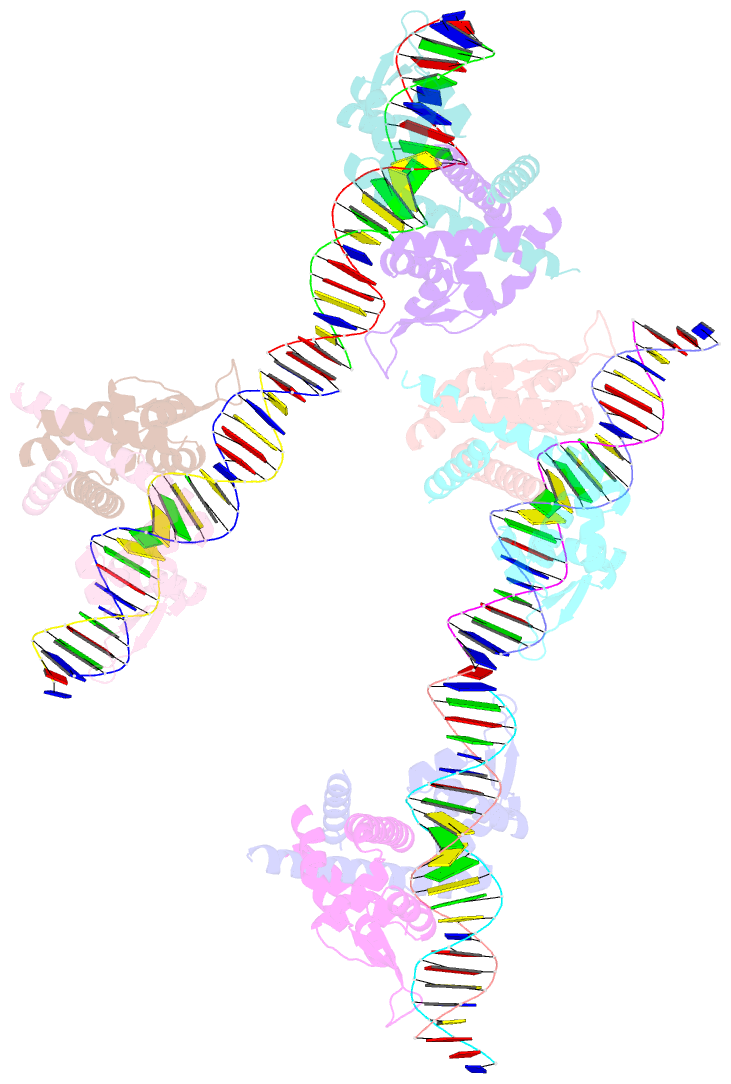Summary information and primary citation
- PDB-id
- 5hlg; SNAP-derived features in text and JSON formats;
DNAproDB
- Class
- transcription regulator-DNA
- Method
- X-ray (3.0 Å)
- Summary
- Structure of reduced abfr bound to DNA
- Reference
- Liu G, Liu X, Xu H, Liu X, Zhou H, Huang Z, Gan J, Chen H, Lan L, Yang CG (2017): "Structural Insights into the Redox-Sensing Mechanism of MarR-Type Regulator AbfR." J. Am. Chem. Soc., 139, 1598-1608. doi: 10.1021/jacs.6b11438.
- Abstract
- As a master redox-sensing MarR-family transcriptional regulator, AbfR participates in oxidative stress responses and virulence regulations in Staphylococcus epidermidis. Here, we present structural insights into the DNA-binding mechanism of AbfR in different oxidation states by determining the X-ray crystal structures of a reduced-AbfR/DNA complex, an overoxidized (Cys13-SO2H and Cys13-SO3H) AbfR/DNA, and 2-disulfide cross-linked AbfR dimer. Together with biochemical analyses, our results suggest that the redox regulation of AbfR-sensing displays two novel features: (i) the reversible disulfide modification, but not the irreversible overoxidation, significantly abolishes the DNA-binding ability of the AbfR repressor; (ii) either 1-disulfide cross-linked or 2-disulfide cross-linked AbfR dimer is biologically significant. The overoxidized species of AbfR, resembling the reduced AbfR in conformation and retaining the DNA-binding ability, does not exist in biologically significant concentrations, however. The 1-disulfide cross-linked modification endows AbfR with significantly weakened capability for DNA-binding. The 2-disulfide cross-linked AbfR adopts a very "open" conformation that is incompatible with DNA-binding. Overall, the concise oxidation chemistry of the redox-active cysteine allows AbfR to sense and respond to oxidative stress correctly and efficiently.





